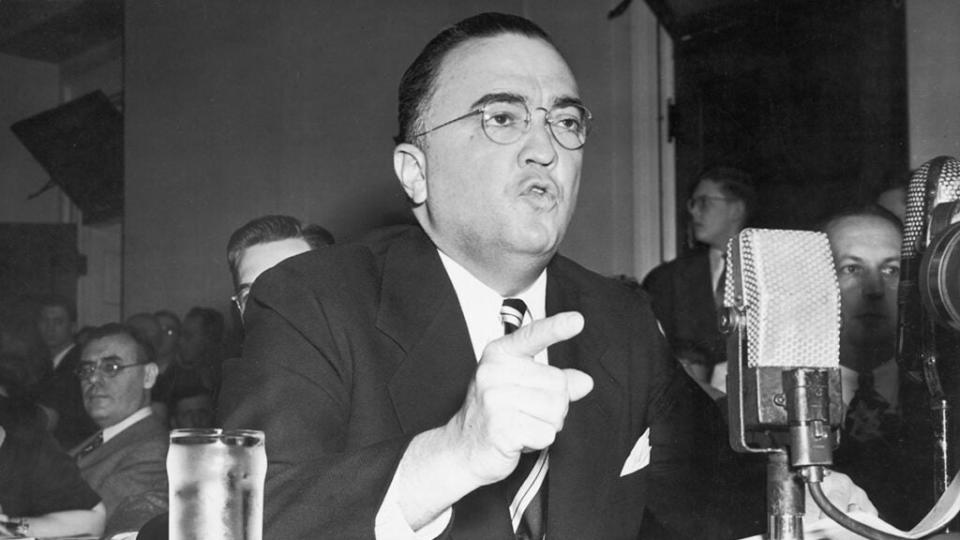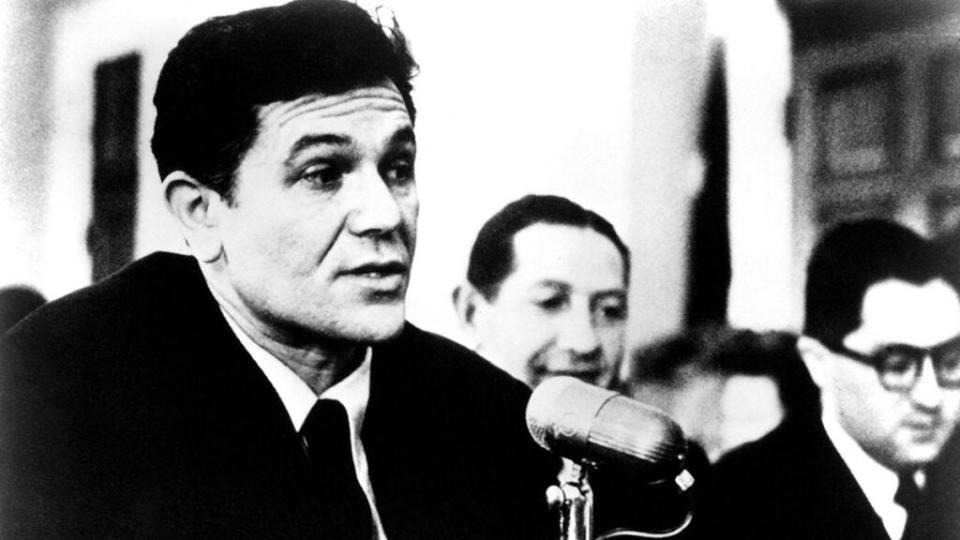How the WGA Strike Finds Echoes in the Hollywood Blacklist of the 1950s
You are reading an exclusive WrapPRO article for free. Want to level up your entertainment career? Subscribe to WrapPRO.
“All of us labor in webs spun long before we were born,” William Faulkner wrote in “Requiem for a Nun.” As we’ve seen with the WGA strike, Hollywood’s past issues with labor often seem like a familiar tangle. An ongoing exhibit at the Skirball Center in Los Angeles about the Hollywood blacklist of the 1950s is making those attending since the writers’ strike began see the dispute in a new — and yet familiar — light.
The writers’ battle with studios is primarily economic, while the blacklist dealt with Cold War politics. But Skirball Center curator Cate Thurston, who put together the current exhibition “Blacklist: The Hollywood Red Scare,” sees similarities between then and now — chiefly in the idea that studios and writers are pitted against each other by external forces in a battle for their livelihoods.
“You can see the lingering effects of the blacklist in the lack of discussion of certain things in unionism in the country, and even in the WGA where it’s baked in and forged in that crucible of the blacklist,” Erin Hill, Assistant Professor of Media and Popular Culture for UC San Diego, told TheWrap.
Hollywood in the 1950s was haunted by the House Un-American Activities Committee and its hunt for political “subversives,” i.e. Communists. The Congressional body was convinced Communists had infiltrated every facet of the filmmaking landscape and was hellbent on rooting them out. The studios, in an attempt to head off unwarranted government intrusion, started tweaking films that had themes considered questionable and limited projects for those accused of being Communists.

Alarm over Communist infiltration, or “Red scares,” had happened in the 1910s, 1930s and early 1940s, Hill explained. But the 1950s alarm became “a tool of management against labor rather than a political disciplinary tool,” she said.
Other scares related to Hollywood in the mid-20th century offered a similar opportunity for the studios to close ranks, Thurston said.
“In 1941, shortly before the U.S. entered the war, a group of Congressmen looked into Hollywood and accused Hollywood of being a ‘Jewish plot to push the country into war,'” she said. Before that, in 1934, Leon Lewis, a lawyer and former executive director of the Anti-Defamation League, brought the studio heads of the time together to let them know antisemites and fascist sympathizers were creeping into the film industry.
While acknowledging the differences between the two events, Thurston saw a common thread, she told TheWrap: “The business of the studio is to make money and protect the studio.”

In the time of the Hollywood blacklist and today, Thurston added, it was Hollywood’s collective desire to do what best served for the studios that ended up leaving individuals hung out to dry.
“Any unionism is political,” said Hill. “The blacklist was used to disrupt labor organizing and to destroy all those unions…. So the same thing is happening now with a different group of people.”
Filmmaking is a business and in both the case of the Hollywood blacklist and the current strike, working people’s livelihoods were and are imperiled.
Thurston said she’d witnessed picketers who felt a kinship with the Skirball’s tribute to those affected by HUAC.
Also Read:
Writers Worldwide Show Support for WGA Strike
“I had some friends who’ve been striking [and] shared pictures of themselves and people they encountered on the picket line who are wearing our ‘Blacklist’ exhibition stickers,” she said.
“What my friend said is that they found a sense of purpose in [the exhibit]. They could look at this and then carry that sense of injustice forward, and go to the picket line and advocate for better conditions,” Thurston added. As a gesture of solidarity with those striking, the Skirball is allowing WGA members to access the exhibit as well as the related film screenings happening at the Skirball for free.
During the blacklist, the very subjects screenwriters wrote about were considered dangerous. The connections to today’s current WGA strike are felt even more realizing how many top Hollywood writers of the 1950s, such as Dalton Trumbo, John Howard Lawson and Carl Foreman found themselves outright denied entry to work in Hollywood because of how their scripts depicted things like democracy and class distinctions.
Also Read:
‘Force Majeure’ Looms Over WGA Members as the Financial Pain of Suspended Deals Sets In
As Ben Burgis wrote for Jacobin, “As the Writers Guild of America settles in for what looks to be a long strike, it’s worth remembering that the problem with Hollywood has never been a lack of writers and directors who want to tell compelling stories… Whether we’re talking about the precarity writers are fighting against now or the vicious purge of Hollywood radicals in the 1950s, the problem has always been the bosses.”
History teaches us to learn from the past, and while the Hollywood blacklist doesn’t address the same themes as today’s strike, the incident reminds onlookers of how bad it can get and why Hollywood always keeps an eye out for No. 1.
You can learn more about the Skirball’s “Blacklist” exhibit on the museum’s website.
For all of TheWrap’s WGA strike coverage, click here.
Also Read:
What Past Hollywood Writers’ Strikes Tell Us About the Future of Movies


